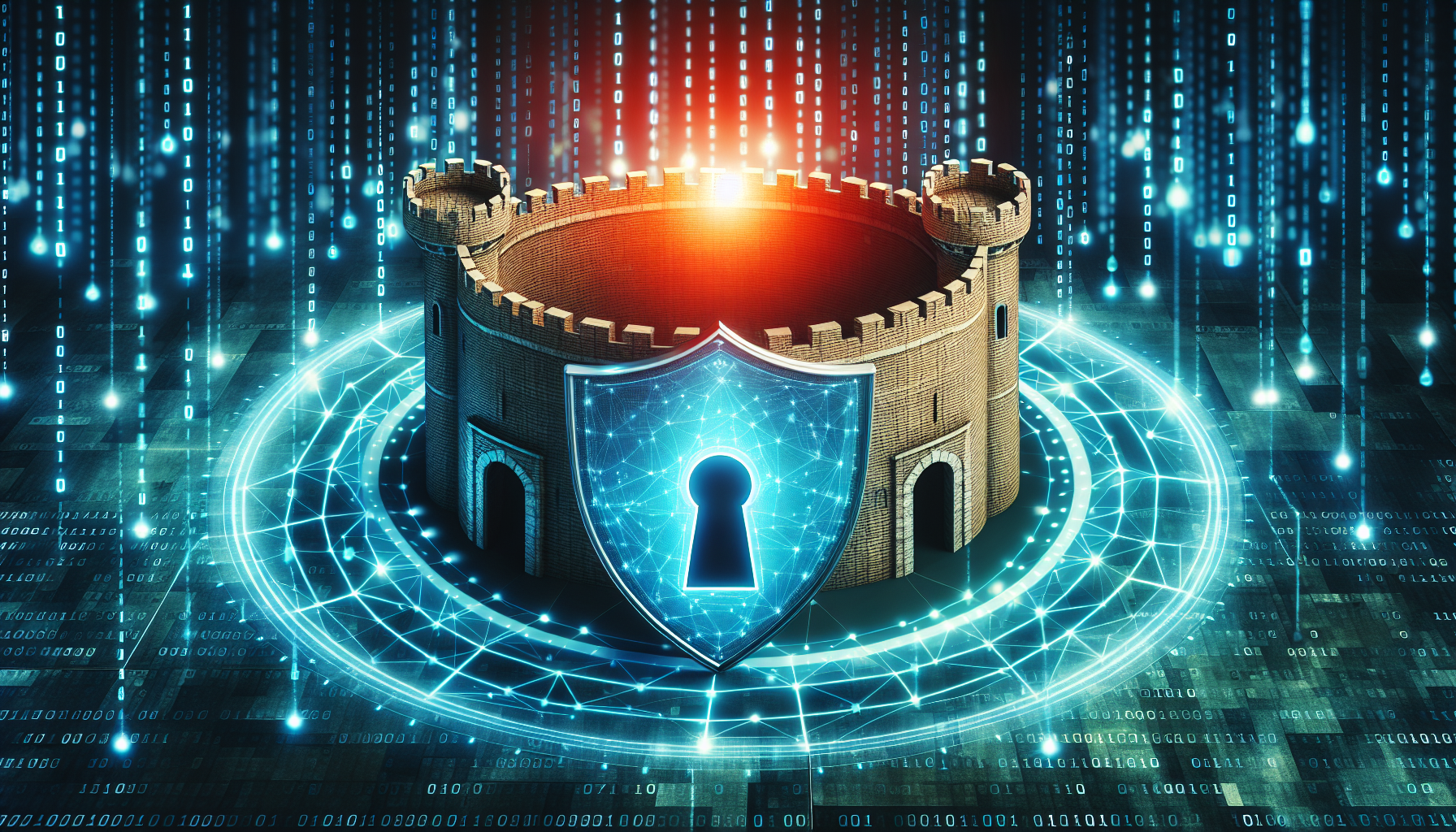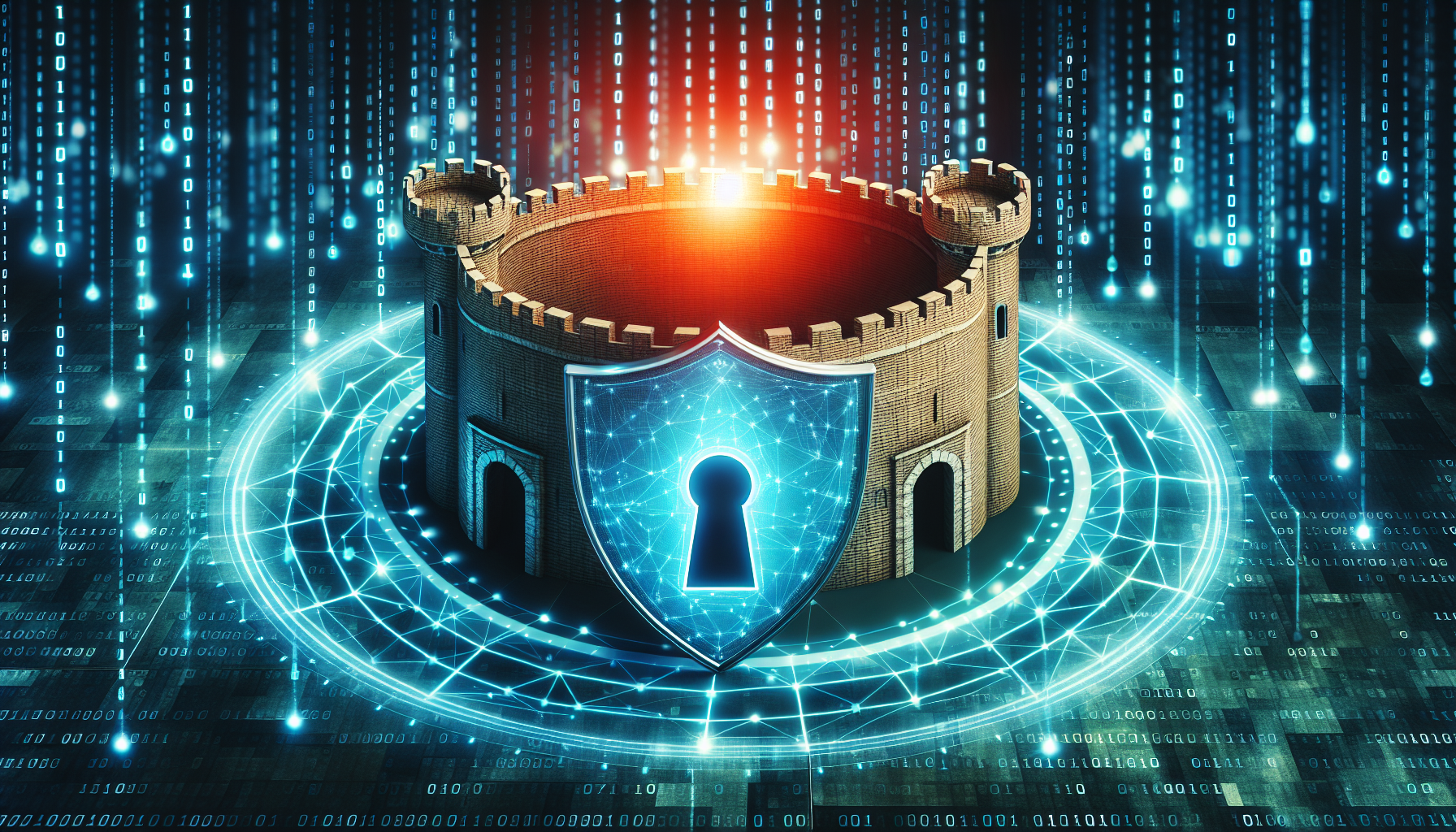
Your Essential Guide to NIST 800 171 Compliance: Safeguarding Sensitive Information
Are you tasked with protecting government-handled data? NIST 800 171 compliance is crucial for contractors and subcontractors holding that responsibility. This guide zeroes in on the essentials—outlining what NIST 800-171 is, why it’s necessary, and how to effectively implement its standards. Dive in for clear, no-nonsense insights into securing Controlled Unclassified Information (CUI) and conforming to pivotal federal cybersecurity regulations.
Key Takeaways
- NIST 800-171 is a set of guidelines established by the National Institute of Standards and Technology to protect Controlled Unclassified Information (CUI) in non-federal information systems, specifically focusing on defense contractors and encompassing data such as personal data, intellectual property, and defense-related information.
- Compliance with NIST 800-171 is crucial for organizations looking to work with the federal government, as it enhances security, creates eligibility for contracts, and provides a competitive advantage, while non-compliance can result in penalties and jeopardized opportunities.
- NIST 800-171 compliance involves understanding and implementing a framework of 14 control families to manage access, protection, and monitoring of CUI, requiring an ongoing commitment to cybersecurity measures and possibly the assistance of external experts or tools.
Understanding NIST 800-171: A Comprehensive Overview

NIST 800-171, developed by the National Institute of Standards and Technology, is a set of guidelines that govern the management of Controlled Unclassified Information (CUI) in non-federal information systems and organizations by contractors and subcontractors of Federal agencies. Its primary focus is on the handling of CUI by defense contractors and subcontractors, encompassing:
- Personal data
- Intellectual property
- Equipment specifications
- Logistical plans
- Other strictly confidential federal defense-related information.
The applicability of NIST SP 800-171 is limited to the areas of a contractor’s network where Controlled Unclassified Information (CUI) or sensitive data is present. It offers a focused strategy for safeguarding the particular data set that necessitates protection, rather than imposing comprehensive security measures across the entire organization.
Organizations can keep abreast of the latest developments and revisions of NIST 800-171 by consulting NIST’s Computer Security Resource Center (CSRC). This resource contains the latest updates, including Revision 3 published in May 2023, and facilitates the maintenance of current compliance with the publication’s requirements, such as communications protection.
The Importance of NIST 800-171 Compliance
NIST compliance, specifically NIST 800-171, plays a pivotal role in enhancing the security of the federal supply chain by setting a standardized baseline for cybersecurity among government contractors and subcontractors responsible for handling Controlled Unclassified Information (CUI). Organizations can strengthen their cybersecurity measures and ensure the protection of sensitive information through the diligent adherence to NIST 800-171 guidelines.
Demonstrating NIST 800-171 compliance doesn’t just enhance an organization’s cybersecurity, it also opens doors for new opportunities. Organizations that adhere to NIST 800-171 standards become eligible for:
- government contracts
- grants and funding
- partnerships with other compliant organizations
- access to government resources and support
By showcasing this compliance, organizations gain a competitive edge in the bidding process for contracts with federal government agencies.
However, it’s not all smooth sailing. Non-compliance with NIST 800-171 can lead to severe consequences. The government may enforce penalties, such as conducting investigations and audits of the organization. Organizations need to implement the requisite security controls and processes, as outlined in the NIST 800-171 guidelines, to achieve compliance.
Who Needs to Comply with NIST 800-171?
Controlled Unclassified Information (CUI) within the context of NIST 800-171 pertains to sensitive information that necessitates protection despite not being classified. This encompasses data that, if exposed, may pose potential harm to national security or the interests of the United States. NIST 800-171 provides guidelines to ensure the confidentiality of CUI in nonfederal systems and organizations, thereby ensuring compliance with NIST standards.
The obligation to adhere to NIST 800-171 extends to all entities that manage Controlled Unclassified Information (CUI) and serve as contractors or subcontractors for Federal agencies. This includes defense contractors that handle CUI and implement measures to limit access to sensitive information.
However, it’s worth noting that there are exemptions available for organizations that handle CUI, allowing them to request exceptions for requirements that are considered non-applicable in their specific circumstances. Thus, while compliance is crucial, it’s not a one-size-fits-all approach and can be tailored to fit the unique needs of an organization.
Key Components of NIST 800-171

The main elements of NIST SP 800-171 are the 14 control families, which function as categories of requirements and objectives for the protection of Controlled Unclassified Information (CUI) within non-federal systems. These control families establish a comprehensive framework governing the access, management, protection, and monitoring of CUI, thereby reducing vulnerabilities and mitigating the risk of unauthorized disclosure of sensitive information.
The 14 control families are:
- Access Control
- Awareness and Training
- Audit and Accountability
- Configuration Management
- Identification and Authentication
- Incident Response
- Maintenance
- Media Protection
- Personnel Security
- Physical Protection
- Risk Assessment
- Security Assessment
- System and Communications Protection
- System and Information Integrity
One such control family is the Audit and Accountability family. It comprises nine controls that necessitate organizations to maintain audit records to support security investigations and ensure user accountability. Similarly, the Awareness and Training control family necessitates that organizations guarantee employees are cognizant of security risks linked to their activities and comprehend the security policies and procedures.
The Access Control family holds significant importance as it delineates 22 controls that restrict CUI access based on the principle of least privilege, govern the interaction of entities with the information, and define the circumstances under which such interaction can occur.
Finally, the Configuration Management control family in NIST 800-171 requires:
- The establishment and maintenance of baseline configurations
- Control over user-installed software
- Strict supervision of changes made to organizational systems.
Achieving and Maintaining Compliance: Best Practices

Achieving and maintaining NIST 800-171 compliance is an ongoing process that demands consistent vigilance, beginning with the conduct of security and risk assessments. These assessments are crucial as they help evaluate the effectiveness of cybersecurity measures and potential IT environment risks, thereby ensuring the efficiency of security controls in safeguarding data.
In addition to internal efforts, organizations can greatly benefit from external expertise. A compliance expert can offer guidance in the implementation of compliance standards and ongoing compliance processes. Professional assessments establish a strong basis for compliance plans, provide expert interpretation of intricate requirements, and aid in preventing compliance misunderstandings.
Prioritizing continuous maintenance for NIST 800-171 compliance is crucial, ensuring that information systems are always current and properly protected. This approach safeguards sensitive information against evolving security threats. Through a combination of these best practices, organizations can enhance their cybersecurity and ensure compliance with NIST 800-171.
The Role of Cybersecurity Maturity Model Certification (CMMC)

The Cybersecurity Maturity Model Certification (CMMC) is a framework designed to establish different levels of cybersecurity maturity within an organization. Its purpose is to evaluate and improve the cybersecurity stance of the Defense Industrial Base (DIB) by gauging an organization’s adherence to NIST cybersecurity standards through specified maturity levels.
At each maturity level, the CMMC aligns its requirements with the cybersecurity standards established by NIST, including NIST 800-171. This strategic alignment ensures that organizations adhering to CMMC levels are concurrently meeting the necessary requirements stipulated by NIST 800-171.
To demonstrate adherence to NIST 800-171 within the CMMC framework, organizations are required to undergo evaluations by certified assessors. Certified Third-Party Assessor Organizations (C3PAOs) and the Defense Industrial Base Cybersecurity Assessment Center (DIBCAC) enforce compliance with CMMC 2.0 through assessments. These assessments are conducted to ensure adherence to the required cybersecurity standards.
Navigating Related Standards: NIST SP 800-53 and ISO 27001
While NIST 800-171 is essential for protecting CUI, it isn’t the only cybersecurity standard out there. Another important standard is NIST 800-53, which encompasses a set of guidelines that delineate the procedures federal agencies should adhere to in constructing and overseeing their information security systems. However, unlike NIST 800-171, which is tailored specifically for non-federal entities, NIST 800-53 focuses on federal agencies.
In addition to NIST standards, there’s also ISO 27001, an internationally recognized standard for information security management systems. Unlike the more rigid requirements of NIST 800-171, ISO 27001 includes 114 controls in an annex, providing organizations with the flexibility to implement these controls according to their specific needs.
Comprehending these related standards and their similarities and differences with NIST 800-171 can assist organizations in customizing their cybersecurity framework to match their unique needs and satisfy diverse compliance requirements.
Developing a System Security Plan (SSP)

One essential aspect of achieving and maintaining NIST 800-171 compliance is developing a System Security Plan (SSP). An SSP is a formal document outlining the methods by which defense organizations ensure compliance with the 110 controls across the 14 security domains and mitigate known and anticipated threats.
A comprehensive SSP should encompass several components, including:
- System Description
- System Environment
- System Security Requirements
- Security Controls
- Control Implementation
- Control Assessment
- Control Documentation
- Incident Response
- System Maintenance
- Training and Awareness
- Plan of Action and Milestones (POA&M)
In order to develop and implement an effective SSP, organizations need to:
- Create an action plan detailing how they will meet any unmet requirements
- Incorporate all compliance evidence into the SSP
- Establish and implement a cybersecurity program
- Ensure that the program follows a defined blueprint or framework
Incident Response and Reporting
Having an effective incident response plan is crucial in the event of a security incident. According to NIST 800-171 guidelines, a comprehensive incident response plan should include steps for:
- Preparation
- Detection/analysis
- Containment/eradication
- Recovery
This protocol ensures teams are prepared to manage incidents, identify intrusions, analyze the circumstances, mitigate the issue, and reinstate systems to operational status.
Incorporating a timely and effective response strategy is a key requirement for achieving NIST 800-171 compliance. It helps organizations address any incident that may pose a risk of data breach or system downtime.
It’s important to follow official policy and fulfill contractual obligations for incident reporting in case of a cybersecurity incident. DoD contractors are required to report security incidents within 72 hours to both the Prime Contractor and through the DOD portal. This is an important part of their obligations.
Leveraging Tools and Resources for NIST 800-171 Compliance
Organizations are not alone when it comes to achieving and maintaining NIST 800-171 compliance. There are several tools and resources available to assist with compliance efforts, including:
- NIST 800-171 Assessment Tools
- Security Compliance Software
- Configuration Management Tools
- CurrentWare Security Software
- ISMS.online Compliance Software
There are also several highly-rated software solutions that can facilitate compliance, including:
- CurrentWare
- Rizkly
- ZenGRC
- Sprinto
- AuditBoard
- Hyperproof
- Netwrix Auditor
- Drata
These tools can aid in various aspects of compliance, from identifying and classifying CUI to mapping folders and permissions.
Beyond tools and software, managed security services can offer invaluable assistance. These services can provide the expertise, tools, and resources necessary to implement and uphold the security controls specified in NIST SP 800-171. Some of the services they offer include:
- Continuous monitoring
- Vulnerability management
- Incident response
- Security assessments
These services can help ensure the security of your systems, protect against cyber threats, and provide essential security training.
Addressing Common Challenges in NIST 800-171 Compliance
Despite the challenges on the route towards NIST 800-171 compliance, there are strategies to overcome common obstacles. A systematic approach can be employed to address compliance challenges, which includes:
- Understanding the NIST 800-171 requirements
- Allocating dedicated resources
- Obtaining guidance on compliance procedures such as training and vendor management.
For organizations dealing with intricate legacy systems, they can utilize system security engineering principles for upgrades and modifications, as well as maintain comprehensive system audit logs for efficient monitoring, analysis, and incident investigation.
To incorporate NIST 800-171 compliance into an existing security framework, organizations should:
- Understand the requirements
- Evaluate their existing security framework
- Create a customized plan
- Put in place the required control measures
- Provide training for employees
- Conduct ongoing monitoring and audits
- Maintain records.
Summary
Navigating the path to NIST 800-171 compliance may seem daunting at first glance, but with a thorough understanding of the requirements, a strategic approach, and leveraging available tools and resources, organizations can effectively achieve and maintain compliance. Remember, the journey towards compliance isn’t a one-time effort but a continuous process that requires vigilance and proactive measures.
In an era where data breaches and cybersecurity threats are becoming increasingly common, adherence to standards such as NIST 800-171 is not just a necessity but a crucial aspect of an organization’s cybersecurity strategy. By ensuring the protection of sensitive information, organizations can not only avoid potential penalties but also safeguard their reputation and maintain the trust of their stakeholders.
Frequently Asked Questions
What is NIST 800-171 standards?
NIST 800-171 is the federal government's framework for ensuring the security of Controlled Unclassified Information (CUI) and standardizing how agencies handle that information, composed of 110 controls divided among 14 families. If you, your company, or any other company you do business with has a federal contract, then you're required to be NIST SP 800-171 compliant.
What is the difference between ISO 27001 and NIST 800-171?
The main difference between ISO 27001 and NIST 800-171 is that NIST 800-171 is designed for non-Federal enterprises, while ISO 27001 is a more general standard applicable to organizations of all types. No artifact.
Is NIST 800-171 non compliance?
Yes, non-federal organizations processing, storing, or transmitting Controlled Unclassified Information (CUI) are required to comply with NIST SP 800-171. This includes defense contractors and organizations with federal contracts involving CUI.
Why is NIST 800-171 compliance important?
NIST 800-171 compliance is important because it enhances the security of the federal supply chain by setting a standardized baseline for cybersecurity among government contractors and subcontractors responsible for handling Controlled Unclassified Information (CUI). This is crucial for maintaining the integrity and confidentiality of sensitive government data.
Who needs to comply with NIST 800-171?
Any entity that manages Controlled Unclassified Information (CUI) and works as a contractor or subcontractor for Federal agencies needs to comply with NIST 800-171.